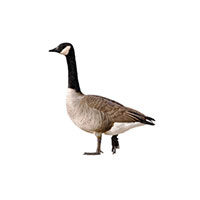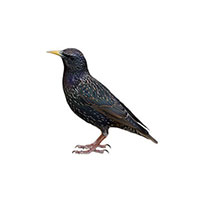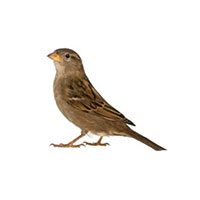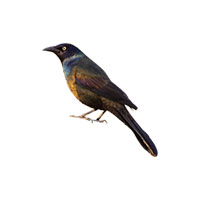Geese in Wisconsin
During warmer months, they feed on grasses, aquatic plants, seeds, and berries. During colder months, they rely more on berries, seeds, and agricultural grains.
Goose Habitat
The black-necked birds inhabit lakes, ponds, and marshes, which act as resting, nesting, and breeding sites. Canadian geese have been considered migratory birds, but man-made lakes and ponds in golf courses, residential communities, and industrial parks are so well kept, they provide optimal living conditions for the large wild goose species so they see no need to migrate. They can live in close proximity to people, which has become an annoyance and hazard to those living or working near geese populations.
Goose Mating & Life Cycle
Geese tend to mate for life. The nest site is chosen and built by the female and is usually on slightly elevated dry ground near water, with good visibility. The nest has a slight depression with a shallow bowl of sticks, grass, weeds, moss and is lined with down.
Eggs
Generally, four to seven white eggs are laid between March and June. Incubation is done by the female for 25-28 days while the male defends the territory. The defense is shown with displays, including lowering head almost to ground with bill slightly raised and open, hissing; also pumps head up and down while standing.
Young
Parents lead young from nest one to two days after hatching. Young are tended by both parents but feed themselves. The first flight usually takes place between seven and nine weeks of age.
Goose Damage
Property Damage
Because geese often forage in large groups, they inflict serious physical and economic damage to agricultural crops, residential lawns, golf courses, ornamental plants, and gardens, particularly in areas where these birds have sought shelter during the molting period.
Lawn Damage
Feeding damage to grass, clover, and cover crops can leave large bare spots that will be subject to erosion.
Vegetation Damage
They trample the vegetation and compact the soil, creating a hard surface that prevents new growth of vegetation.
Feces
Goose feces can contribute to the excessive richness of nutrients in small water bodies, especially those that have restricted circulation and flow-through, which in turn may stimulate algae and weed growth. Large amounts of bacteria contained from goose feces may lead to the need for special treatment of drinking water drawn from surface ponds or reservoirs where geese congregate. Additionally, closures of beaches and other public areas littered with accumulated goose feces may be necessary due to the contamination or the threat of falls as people lose footing on the slippery material.
Goose Prevention & Control
Goose Prevention
Mowing and maintaining lawns down to the water’s edge and maintaining very large lawns anywhere near water is vital to preventing geese. Plastic mesh placed over grass usually discourages them from walking on a lawn.
Goose Control
Canadian geese are protected by the Federal Migratory Bird Act, which states that most birds and their parts – feathers, eggs, nests, etc.- are protected by federal law from being killed, taken, transports, possessed, bought, sold, imported, or exported without a valid federal permit.
Sound devices: Similar devices used to scare other species of birds have been shown to have an effect on Canadian geese but are only effective in the short term.
Visual deterrents: Optical scare devices that create light beams reflected from direct sunlight create a pattern that disorients birds in flight by limiting their vision.
Coyote replicas depict a realistic silhouette of this geese predator. These decoys are humane, easy to set up, or takedown and effective.
Bird wire system: Wires are placed on the outer perimeter and across lakes and ponds to prevent geese from inhabiting these areas.
Bird services are limited to commercial clients.
Need help with Geese?
We'll call you! Leave your information below.





